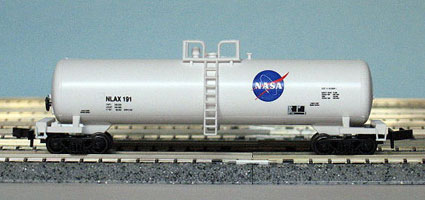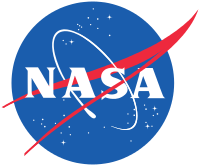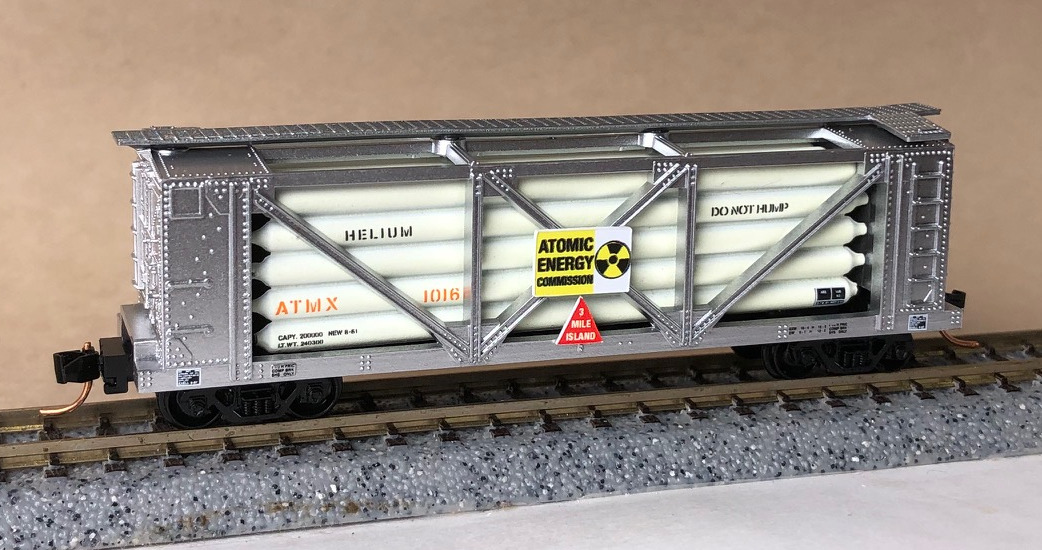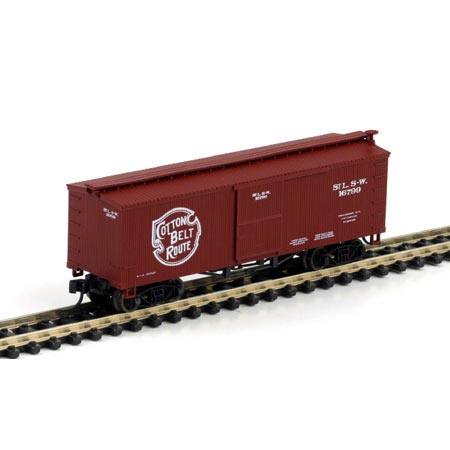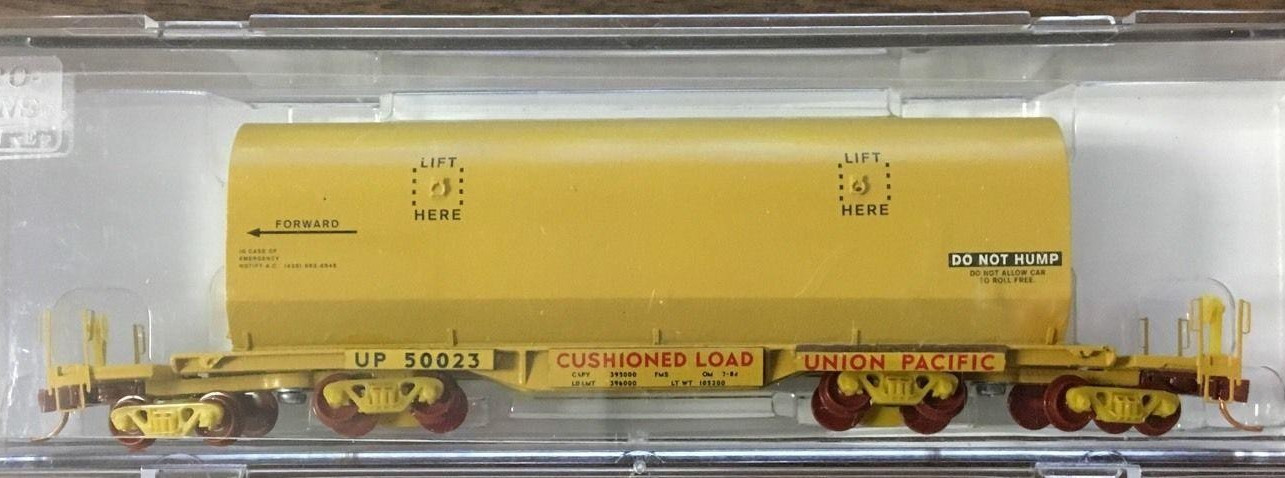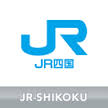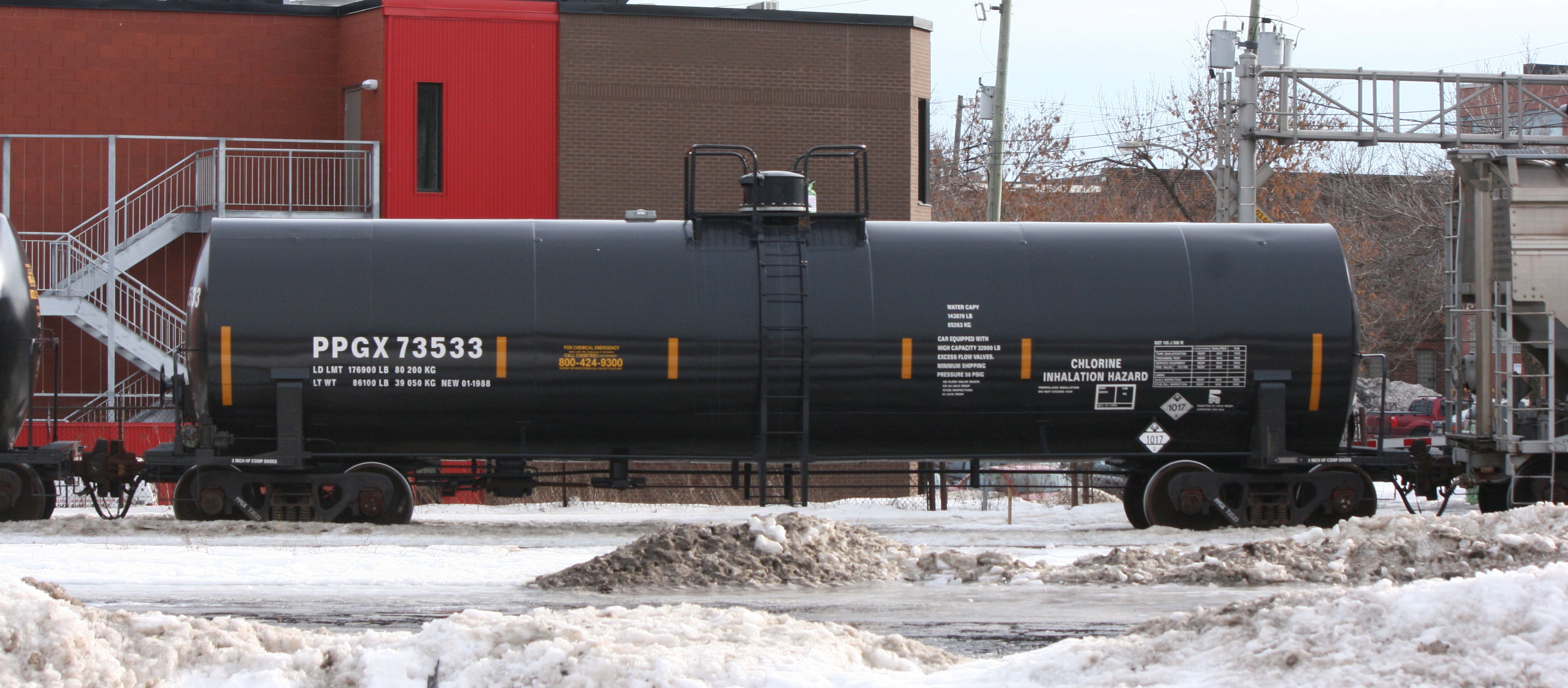Model Information: This is a fairly nice quality tank car from MDC Roundhouse. It likely first appeared in the late 1980s. It appears to model a general service tank car and the road names and paint schemes seem to suggest this is what MDC had in mind. The Roundhouse models were available in both kit and RTR packaging. It doesn't have a ton of detail. Most versions were released with Rapido Couplers so it therefore qualifies as a late 1st generation model. Nevertheless, once the couplers are swapped out, it will look just fine on even the most modern of layouts due to the high print quality and molding on this model. Like all other N Scale toolings made by MDC Roundhouse, this one was acquired by Athearn in 2006. Eastern Seaboard Models has also sold these in custom paint schemes.
Prototype History: Larger, 50' Tank cars replaced their smaller predecessors in the late 1960s and 1970s. The Richmond Tank Car Company was one of several manufacturers to produce these general purpose railcars. They generally had about 20,000 gallon capacity and were used to transport many different commodities.
Road Name History: The National Aeronautics and Space Administration (NASA) is an independent agency of the executive branch of the United States federal government responsible for the civilian space program as well as aeronautics and aerospace research.
President Dwight D. Eisenhower established NASA in 1958 with a distinctly civilian (rather than military) orientation encouraging peaceful applications in space science. The National Aeronautics and Space Act was passed on July 29, 1958, disestablishing NASA's predecessor, the National Advisory Committee for Aeronautics (NACA). The new agency became operational on October 1, 1958.
Since that time, most US space exploration efforts have been led by NASA, including the Apollo moon-landing missions, the Skylab space station, and later the Space Shuttle. Currently, NASA is supporting the International Space Station and is overseeing the development of the Orion Multi-Purpose Crew Vehicle, the Space Launch System and Commercial Crew vehicles. The agency is also responsible for the Launch Services Program (LSP) which provides oversight of launch operations and countdown management for unmanned NASA launches.
From Wikipedia
The NASA Railroad operates 38 miles of track connecting the Kennedy Space Center at Cape Canaveral, Florida to a connection with the Florida East Coast Railroad. Traffic includes fuel, rocket components and other equipment switched in recent years with a trio of ex-TP&W SW1500’s. Traffic fell off considerably with the cancellation of the Space Shuttle program in 2011. NASA’s fleet of liquid helium and liquid oxygen tank cars were loaned to SpaceX in Texas and California. The railroad was inactive between 2013 and 2020 but limited service has resumed as private space launch companies have begun to use the Kennedy Space Center again.
President Dwight D. Eisenhower established NASA in 1958 with a distinctly civilian (rather than military) orientation encouraging peaceful applications in space science. The National Aeronautics and Space Act was passed on July 29, 1958, disestablishing NASA's predecessor, the National Advisory Committee for Aeronautics (NACA). The new agency became operational on October 1, 1958.
Since that time, most US space exploration efforts have been led by NASA, including the Apollo moon-landing missions, the Skylab space station, and later the Space Shuttle. Currently, NASA is supporting the International Space Station and is overseeing the development of the Orion Multi-Purpose Crew Vehicle, the Space Launch System and Commercial Crew vehicles. The agency is also responsible for the Launch Services Program (LSP) which provides oversight of launch operations and countdown management for unmanned NASA launches.
From Wikipedia
The NASA Railroad operates 38 miles of track connecting the Kennedy Space Center at Cape Canaveral, Florida to a connection with the Florida East Coast Railroad. Traffic includes fuel, rocket components and other equipment switched in recent years with a trio of ex-TP&W SW1500’s. Traffic fell off considerably with the cancellation of the Space Shuttle program in 2011. NASA’s fleet of liquid helium and liquid oxygen tank cars were loaned to SpaceX in Texas and California. The railroad was inactive between 2013 and 2020 but limited service has resumed as private space launch companies have begun to use the Kennedy Space Center again.
Brand/Importer Information:  MDC Roundhouse was founded in California in 1938 and relocated in 1993 to Carson City, Nevada due to statewide restrictions on painting. MDC Roundhouse was a producer of both RTR (Ready-to-Run) and kit versions of N Scale rolling stock as well as RTR locomotives. They entered the N scale market in 1979 with a Thrall Hi-Side Gondola and a Hi-Cube Single Door Box Car. MDC Roundhouse was purchased by Horizon Hobbies in June of 2004, when its owner since 1938 C. H. Menteer retired, and merged into their Athearn line.
MDC Roundhouse was founded in California in 1938 and relocated in 1993 to Carson City, Nevada due to statewide restrictions on painting. MDC Roundhouse was a producer of both RTR (Ready-to-Run) and kit versions of N Scale rolling stock as well as RTR locomotives. They entered the N scale market in 1979 with a Thrall Hi-Side Gondola and a Hi-Cube Single Door Box Car. MDC Roundhouse was purchased by Horizon Hobbies in June of 2004, when its owner since 1938 C. H. Menteer retired, and merged into their Athearn line.
Unlike many of their contemporaries which contracted with European firms to produce their products, MDC made their own toolings. They made several popular body styles and produced them for road names that many other vendors (even Micro-Trains) wouldn't touch. This made them popular with modelers. Also, their un-assembled "kits" permitted a lower price point so they were popular with "runners" as well as "modelers".
Of particular interest was the attention given to modern 50 foot steel boxcars. They made some attempt to accurately mold the differences into distinct models to represent each of the major prototype manufacturers products. They have distinct toolings not only for the different products from FMC, BFF and PS, but also multiple models for each of these manufacturers including "standard" vs "Youngstown" doors and "waffle" vs. "rib" sides. In total they produced 13 different versions of the 50 foot steel boxcar.

Unlike many of their contemporaries which contracted with European firms to produce their products, MDC made their own toolings. They made several popular body styles and produced them for road names that many other vendors (even Micro-Trains) wouldn't touch. This made them popular with modelers. Also, their un-assembled "kits" permitted a lower price point so they were popular with "runners" as well as "modelers".
Of particular interest was the attention given to modern 50 foot steel boxcars. They made some attempt to accurately mold the differences into distinct models to represent each of the major prototype manufacturers products. They have distinct toolings not only for the different products from FMC, BFF and PS, but also multiple models for each of these manufacturers including "standard" vs "Youngstown" doors and "waffle" vs. "rib" sides. In total they produced 13 different versions of the 50 foot steel boxcar.
Item created by: dracozamach on 2020-05-25 12:03:17
If you see errors or missing data in this entry, please feel free to log in and edit it. Anyone with a Gmail account can log in instantly.
If you see errors or missing data in this entry, please feel free to log in and edit it. Anyone with a Gmail account can log in instantly.


